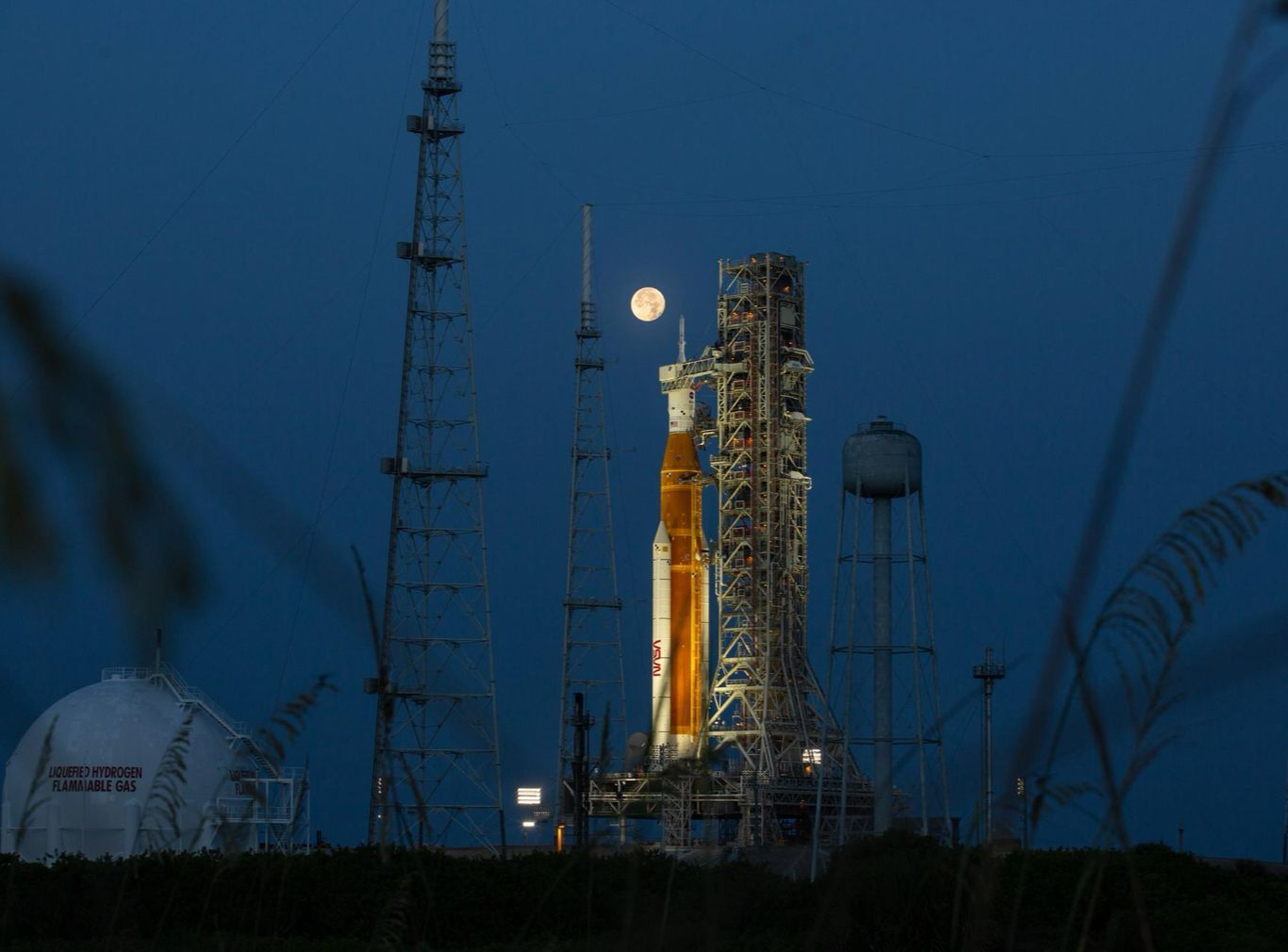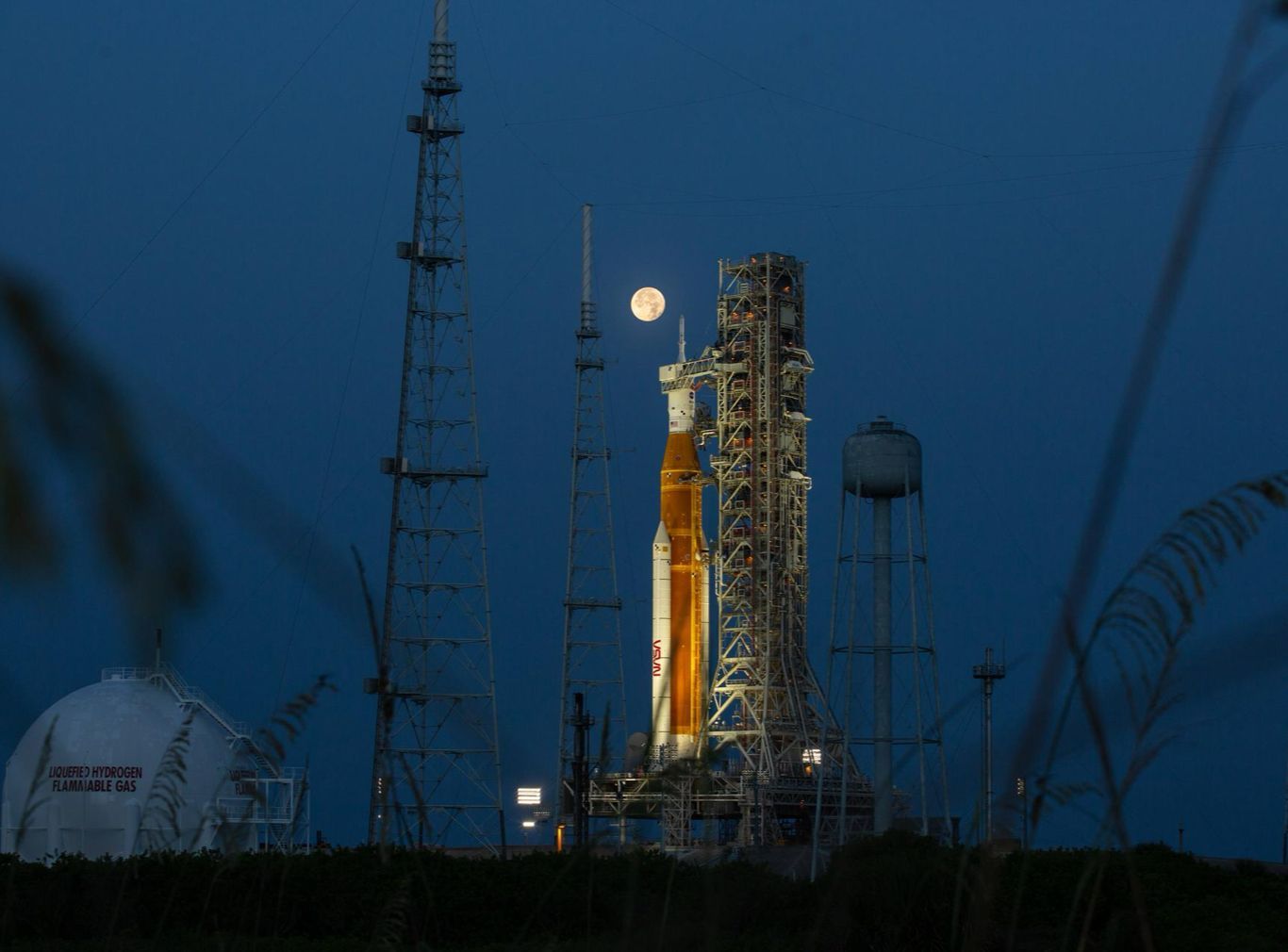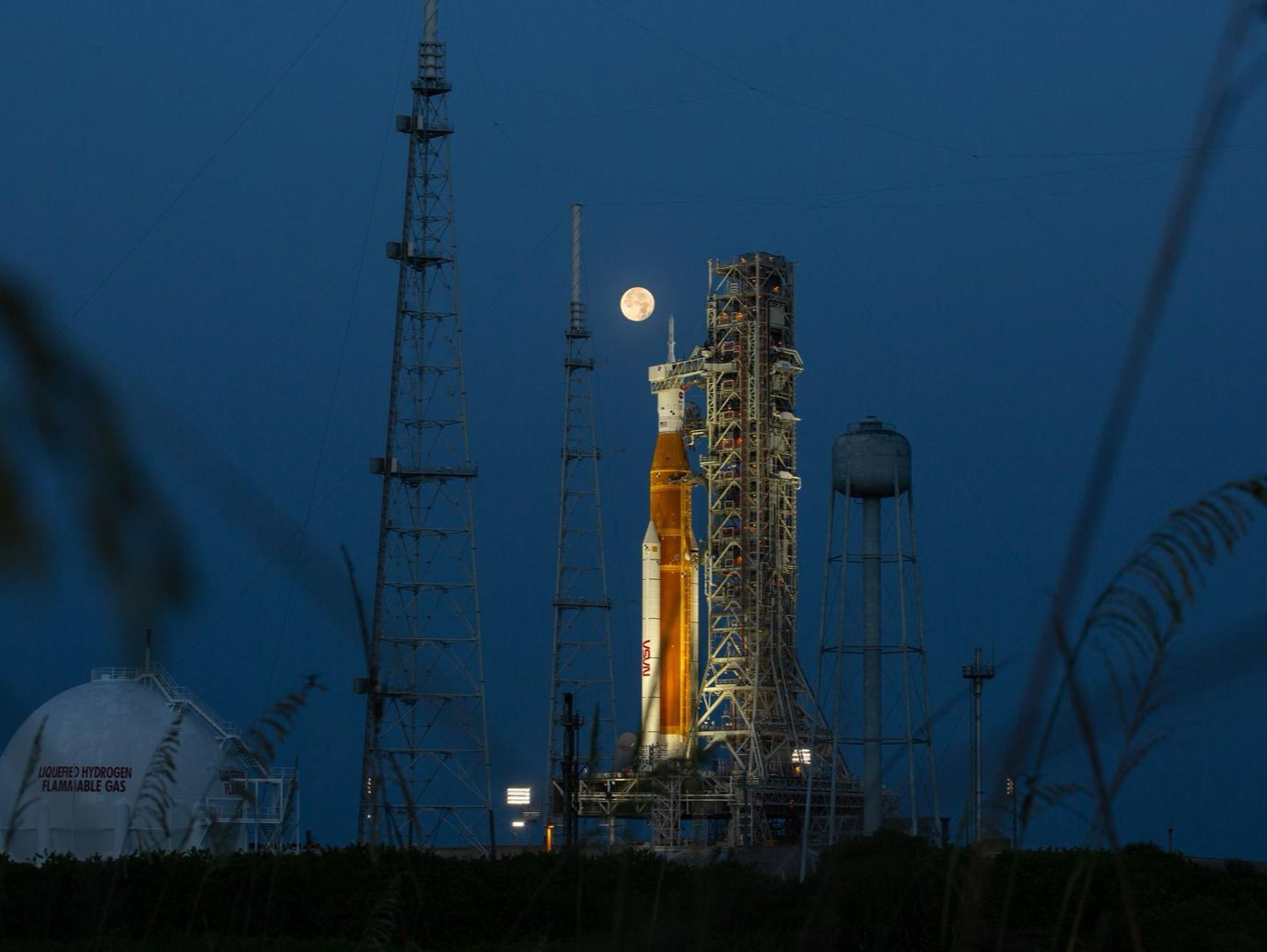Define Our Future
18 May 2024

(Image: Adobe)
The United Nations Office for Outer Space Affairs (UNOOSA) held its conference on the Management and Sustainability of Outer Space Activities this week in Portugal. The meeting aimed to contribute to the global conversation regarding space governance, sustainability, and utilization, in preparation for the highly anticipated UN Summit of the Future in September, where Sustainable Development Goals and the Secretary-General’s policy briefs will be the key focus.
An outcome of the meeting was the Lisbon Declaration on Outer Space, with many participants agreeing that space should be “a safe, sustainable, and inclusive domain for generations to come,” and that the UN should remain the principal forum for establishing “internationally recognized governance regimes,” particularly concerning space debris, traffic coordination, and space resources (UNOOSA, 2024).
The sustainability and safety of space are of paramount importance, considering the exponential growth of orbital infrastructure and space debris. It is also increasingly pressing to address the gaps in UN law relating to the fair and sustainable use of space resources, such as those on other celestial bodies, especially as we observe, almost weekly, growing plans for the utilization of our moon.
Who owns lunar resources? Questions to be answered as JAXA and India also look to access resources on the Moon
AC Grayling, philosopher and author or “Who Owns The Moon?” Described the Outer Space Treaty as purposefully having vague language in order to avoid commitment to an interpretation in terms of a ‘global commons’ and a ‘global public good’…”. This raises important questions as to not only the ownership of lunar territory, but also the resources within that territory. If the Moon is the ‘global common’ of humankind, then what about the resources that lie within them?
The US, amongst others, has legislated to allow for the mining of outer space resources, firstly under the Commercial Space Launch Competitiveness Act 2015, and within their international framework the Artemis Accords. These initiatives are becoming increasingly important as we witness a growing mission cadence to not only land on the Moon, but to extract and utilise its resources.
In an interview with The Print the Japanese Space Agency (JAXA) revealed that they are on track with their joint mission with India to explore the subsurface of the Moon for signs of water, with Japan providing a rover and India the lander. The mission, named LUPEX, is due to launch in 2026 and will also carry observation instruments for both NASA and ESA.
India are also planning for their next lunar mission, after their resoundingly successful Chandrayaan-3 mission in 2023. Chandrayaan-4 will go a step further and aim to retrieve lunar soil samples and is due to launch in the next “four or five years” according to Nilesh Desai, Director of the Space Applications Centre (SAC).
While collecting and retrieving lunar soil is not a new venture - with China currently en-route to bring back samples from the lunar far-side - it will become more contentious when resources are utilised and operations are scaled to support the construction of permanent lunar infrastructure and furthermore, to even retrieve for earthbound applications.

(Space see promise in Artemis project (Image: NASA/Cory Huston)
IM on track for second mission, iSpace see opportunities in Artemis project
The US Artemis Accords also aim to legislate for private sector activity on the Moon through encouraging collaboration with commercial entities. This will also be of increasing importance considering the leading role private companies are playing in lowering barriers to accessing the Moon.
Intuitive Machines (US) have announced that they are on track with plans for their next mission, IM-2, after becoming the first private company to successfully land on the Moon in February. IM-2 is due to launch in Q4 if this year, and will be followed by IM-3 in 2025. Furthermore, the company also announced that their fourth mission may be a purely commercial one, implying that companies are coming to point where they no longer may need to rely on agency customers and public finance.
Nonetheless, private lunar exploration companies will continue to play a key role in national lunar missions, validating a new cost-effective model for agencies such as NASA. Japan-based iSpace this week told of how a recent agreement between the US and Japan on collaboration through the Artemis project could provide them with more opportunities, creating a positive “business environment”. Takeshi Hakamada, chief executive of iSpace, said that the agreement could create demand for lunar robotics and landers, supporting scientific exploration and technology demonstrations.
iSpace this week also announced a deal with Romania’s Control Data Systems SRL (CDS) to deliver “precise location measurement equipment to the Moon”. CDS’s technology uses Ultra-Wideband for determining precise positions, combining navigation and telecommunications. Such technology will be pivotal in building infrastructure on the Moon, providing GPS-like services. The venture will also be Romania’s first commercial lunar mission.
Stretching beyond the Moon, New Space giants SpaceX and Blue Origin have been commissioned by NASA to develop internet solutions to connect Earth and Mars, under the agency’s Mars Exploration Program. The NASA Jet Propulsion Laboratory (NASA JPL) agreed to the SpaceX proposal to “adapt Earth-orbit communication satellites for Mars”, using a Starlinks that could enable broadband connection in future colonies on Mars, while also connecting to the Earth-based Starlink system.
These steps go to prove that not only are commercial entities driving the industrial revolution in Earth orbit, but are primed to take a similar lead in building infrastructure on the Moon and beyond. While this leadership is paving the way our future, we must also consider the voices represented in the Lisbon Treaty this week, calling for an “inclusive domain for generations to come”.
The Outer Space Treaty describes outer space as the province of all humankind, yet the expanding role of commercial entities has not yet been properly defined. Global conversations on the subject of comprehensive outer space governance, at UN and national level, are becoming ever-more urgent, as we strive to ensure that space becomes and remains an accessible and sustainable economy for all.
Define Our Future

(Image: SpaceX)
18 May 2024
UN Lisbon Declaration Adds To Global Conversation On Outer Space Governance, while Japan, India and US Detail Lunar Missions - Space News Roundup

The United Nations Office for Outer Space Affairs (UNOOSA) held its conference on the Management and Sustainability of Outer Space Activities this week in Portugal. The meeting aimed to contribute to the global conversation regarding space governance, sustainability, and utilization, in preparation for the highly anticipated UN Summit of the Future in September, where Sustainable Development Goals and the Secretary-General’s policy briefs will be the key focus.
An outcome of the meeting was the Lisbon Declaration on Outer Space, with many participants agreeing that space should be “a safe, sustainable, and inclusive domain for generations to come,” and that the UN should remain the principal forum for establishing “internationally recognized governance regimes,” particularly concerning space debris, traffic coordination, and space resources (UNOOSA, 2024).
The sustainability and safety of space are of paramount importance, considering the exponential growth of orbital infrastructure and space debris. It is also increasingly pressing to address the gaps in UN law relating to the fair and sustainable use of space resources, such as those on other celestial bodies, especially as we observe, almost weekly, growing plans for the utilization of our moon.
Who owns lunar resources? Questions to be answered as JAXA and India also look to access resources on the Moon
AC Grayling, philosopher and author or “Who Owns The Moon?” Described the Outer Space Treaty as purposefully having vague language in order to avoid commitment to an interpretation in terms of a ‘global commons’ and a ‘global public good’…”. This raises important questions as to not only the ownership of lunar territory, but also the resources within that territory. If the Moon is the ‘global common’ of humankind, then what about the resources that lie within them?
The US, amongst others, has legislated to allow for the mining of outer space resources, firstly under the Commercial Space Launch Competitiveness Act 2015, and within their international framework the Artemis Accords. These initiatives are becoming increasingly important as we witness a growing mission cadence to not only land on the Moon, but to extract and utilise its resources.
In an interview with The Print the Japanese Space Agency (JAXA) revealed that they are on track with their joint mission with India to explore the subsurface of the Moon for signs of water, with Japan providing a rover and India the lander. The mission, named LUPEX, is due to launch in 2026 and will also carry observation instruments for both NASA and ESA.
India are also planning for their next lunar mission, after their resoundingly successful Chandrayaan-3 mission in 2023. Chandrayaan-4 will go a step further and aim to retrieve lunar soil samples and is due to launch in the next “four or five years” according to Nilesh Desai, Director of the Space Applications Centre (SAC).
While collecting and retrieving lunar soil is not a new venture - with China currently en-route to bring back samples from the lunar far-side - it will become more contentious when resources are utilised and operations are scaled to support the construction of permanent lunar infrastructure and furthermore, to even retrieve for earthbound applications.

Space see promise in Artemis project (Image: NASA/Cory Huston)
IM on track for second mission, iSpace see opportunities in Artemis project
The US Artemis Accords also aim to legislate for private sector activity on the Moon through encouraging collaboration with commercial entities. This will also be of increasing importance considering the leading role private companies are playing in lowering barriers to accessing the Moon.
Intuitive Machines (US) have announced that they are on track with plans for their next mission, IM-2, after becoming the first private company to successfully land on the Moon in February. IM-2 is due to launch in Q4 if this year, and will be followed by IM-3 in 2025. Furthermore, the company also announced that their fourth mission may be a purely commercial one, implying that companies are coming to point where they no longer may need to rely on agency customers and public finance.
Nonetheless, private lunar exploration companies will continue to play a key role in national lunar missions, validating a new cost-effective model for agencies such as NASA. Japan-based iSpace this week told of how a recent agreement between the US and Japan on collaboration through the Artemis project could provide them with more opportunities, creating a positive “business environment”. Takeshi Hakamada, chief executive of iSpace, said that the agreement could create demand for lunar robotics and landers, supporting scientific exploration and technology demonstrations.
iSpace this week also announced a deal with Romania’s Control Data Systems SRL (CDS) to deliver “precise location measurement equipment to the Moon”. CDS’s technology uses Ultra-Wideband for determining precise positions, combining navigation and telecommunications. Such technology will be pivotal in building infrastructure on the Moon, providing GPS-like services. The venture will also be Romania’s first commercial lunar mission.
Stretching beyond the Moon, New Space giants SpaceX and Blue Origin have been commissioned by NASA to develop internet solutions to connect Earth and Mars, under the agency’s Mars Exploration Program. The NASA Jet Propulsion Laboratory (NASA JPL) agreed to the SpaceX proposal to “adapt Earth-orbit communication satellites for Mars”, using a Starlinks that could enable broadband connection in future colonies on Mars, while also connecting to the Earth-based Starlink system.
These steps go to prove that not only are commercial entities driving the industrial revolution in Earth orbit, but are primed to take a similar lead in building infrastructure on the Moon and beyond. While this leadership is paving the way our future, we must also consider the voices represented in the Lisbon Treaty this week, calling for an “inclusive domain for generations to come”.
The Outer Space Treaty describes outer space as the province of all humankind, yet the expanding role of commercial entities has not yet been properly defined. Global conversations on the subject of comprehensive outer space governance, at UN and national level, are becoming ever-more urgent, as we strive to ensure that space becomes and remains an accessible and sustainable economy for all.
Share this article
18 May 2024
UN Lisbon Declaration Adds To Global Conversation On Outer Space Governance, while Japan, India and US Detail Lunar Missions - Space News Roundup


(Image: Adobe)
The United Nations Office for Outer Space Affairs (UNOOSA) held its conference on the Management and Sustainability of Outer Space Activities this week in Portugal. The meeting aimed to contribute to the global conversation regarding space governance, sustainability, and utilization, in preparation for the highly anticipated UN Summit of the Future in September, where Sustainable Development Goals and the Secretary-General’s policy briefs will be the key focus.
An outcome of the meeting was the Lisbon Declaration on Outer Space, with many participants agreeing that space should be “a safe, sustainable, and inclusive domain for generations to come,” and that the UN should remain the principal forum for establishing “internationally recognized governance regimes,” particularly concerning space debris, traffic coordination, and space resources (UNOOSA, 2024).
The sustainability and safety of space are of paramount importance, considering the exponential growth of orbital infrastructure and space debris. It is also increasingly pressing to address the gaps in UN law relating to the fair and sustainable use of space resources, such as those on other celestial bodies, especially as we observe, almost weekly, growing plans for the utilization of our moon.
Who owns lunar resources? Questions to be answered as JAXA and India also look to access resources on the Moon
AC Grayling, philosopher and author or “Who Owns The Moon?” Described the Outer Space Treaty as purposefully having vague language in order to avoid commitment to an interpretation in terms of a ‘global commons’ and a ‘global public good’…”. This raises important questions as to not only the ownership of lunar territory, but also the resources within that territory. If the Moon is the ‘global common’ of humankind, then what about the resources that lie within them?
The US, amongst others, has legislated to allow for the mining of outer space resources, firstly under the Commercial Space Launch Competitiveness Act 2015, and within their international framework the Artemis Accords. These initiatives are becoming increasingly important as we witness a growing mission cadence to not only land on the Moon, but to extract and utilise its resources.
In an interview with The Print the Japanese Space Agency (JAXA) revealed that they are on track with their joint mission with India to explore the subsurface of the Moon for signs of water, with Japan providing a rover and India the lander. The mission, named LUPEX, is due to launch in 2026 and will also carry observation instruments for both NASA and ESA.
India are also planning for their next lunar mission, after their resoundingly successful Chandrayaan-3 mission in 2023. Chandrayaan-4 will go a step further and aim to retrieve lunar soil samples and is due to launch in the next “four or five years” according to Nilesh Desai, Director of the Space Applications Centre (SAC).
While collecting and retrieving lunar soil is not a new venture - with China currently en-route to bring back samples from the lunar far-side - it will become more contentious when resources are utilised and operations are scaled to support the construction of permanent lunar infrastructure and furthermore, to even retrieve for earthbound applications.

iSpace see promise in Artemis project (Image: NASA/Cory Huston)
IM on track for second mission, iSpace see opportunities in Artemis project
The US Artemis Accords also aim to legislate for private sector activity on the Moon through encouraging collaboration with commercial entities. This will also be of increasing importance considering the leading role private companies are playing in lowering barriers to accessing the Moon.
Intuitive Machines (US) have announced that they are on track with plans for their next mission, IM-2, after becoming the first private company to successfully land on the Moon in February. IM-2 is due to launch in Q4 if this year, and will be followed by IM-3 in 2025. Furthermore, the company also announced that their fourth mission may be a purely commercial one, implying that companies are coming to point where they no longer may need to rely on agency customers and public finance.
Nonetheless, private lunar exploration companies will continue to play a key role in national lunar missions, validating a new cost-effective model for agencies such as NASA. Japan-based iSpace this week told of how a recent agreement between the US and Japan on collaboration through the Artemis project could provide them with more opportunities, creating a positive “business environment”. Takeshi Hakamada, chief executive of iSpace, said that the agreement could create demand for lunar robotics and landers, supporting scientific exploration and technology demonstrations.
iSpace this week also announced a deal with Romania’s Control Data Systems SRL (CDS) to deliver “precise location measurement equipment to the Moon”. CDS’s technology uses Ultra-Wideband for determining precise positions, combining navigation and telecommunications. Such technology will be pivotal in building infrastructure on the Moon, providing GPS-like services. The venture will also be Romania’s first commercial lunar mission.
Stretching beyond the Moon, New Space giants SpaceX and Blue Origin have been commissioned by NASA to develop internet solutions to connect Earth and Mars, under the agency’s Mars Exploration Program. The NASA Jet Propulsion Laboratory (NASA JPL) agreed to the SpaceX proposal to “adapt Earth-orbit communication satellites for Mars”, using a Starlinks that could enable broadband connection in future colonies on Mars, while also connecting to the Earth-based Starlink system.
These steps go to prove that not only are commercial entities driving the industrial revolution in Earth orbit, but are primed to take a similar lead in building infrastructure on the Moon and beyond. While this leadership is paving the way our future, we must also consider the voices represented in the Lisbon Treaty this week, calling for an “inclusive domain for generations to come”.
The Outer Space Treaty describes outer space as the province of all humankind, yet the expanding role of commercial entities has not yet been properly defined. Global conversations on the subject of comprehensive outer space governance, at UN and national level, are becoming ever-more urgent, as we strive to ensure that space becomes and remains an accessible and sustainable economy for all.
Share this article

